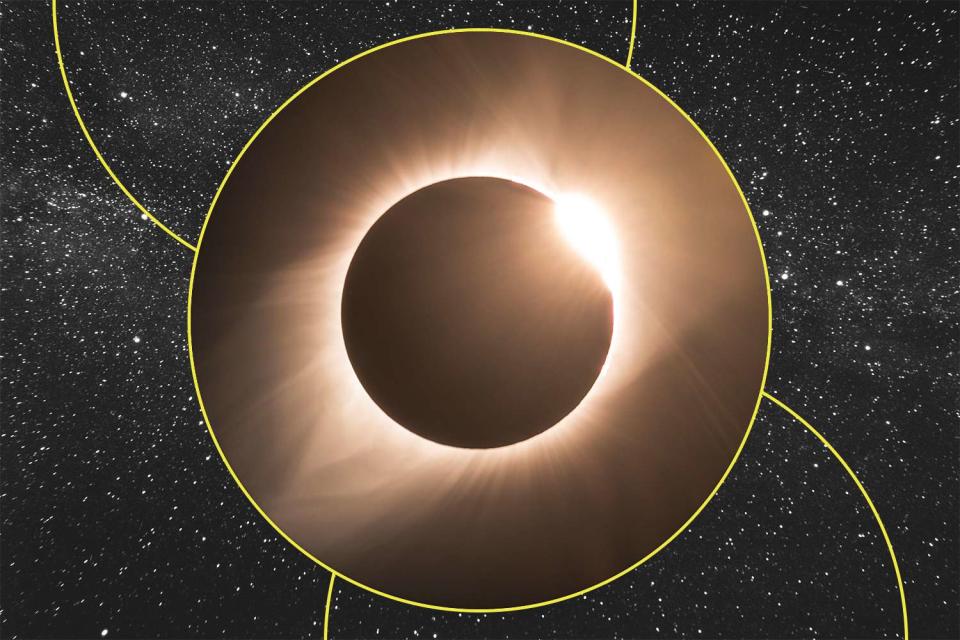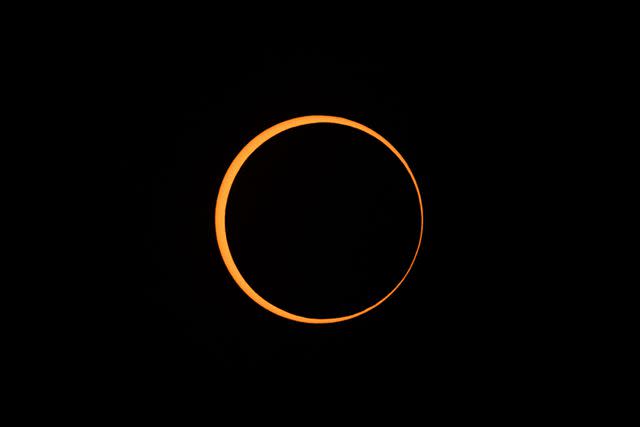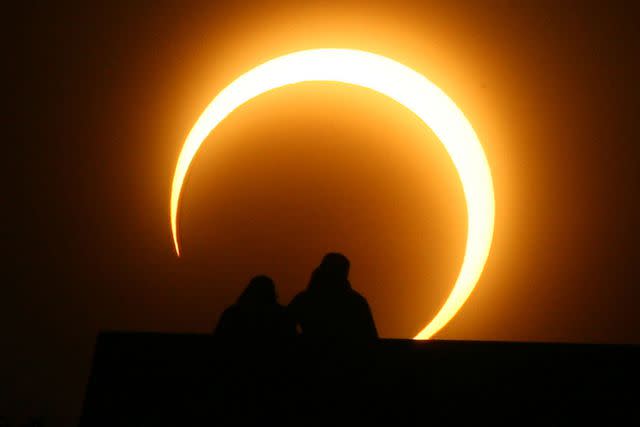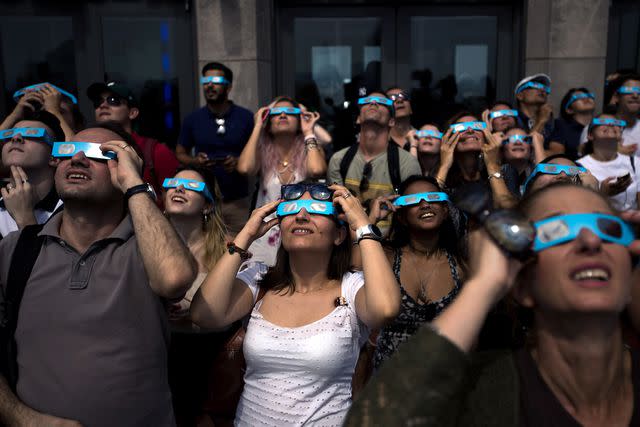All About the Rare Total Solar Eclipse, Including Where It Occurs and How to See It
The next total solar eclipse in the United States won't occur for another 20 years

Getty
Prepare for the sky to go dark as the total solar eclipse takes place this April.
Marking the first total solar eclipse since 2017, the upcoming event will take place across North America, passing over Mexico, the United States, and Canada, per NASA.
As the government agency states, a total solar eclipse occurs when the Moon passes between the Sun and Earth, completely obscuring the face of the Sun. As a result, people in the path of the eclipse will experience a darkened sky (as if it were dawn or dusk).
While there are several different types of eclipses, total solar eclipses in the United States are especially rare. In fact, the next one won't occur for another 20 years.
That being said, you’ll want to make sure you’re completely prepared when the event comes your way.
From how to safely watch to where the path of the total solar eclipse will occur, here’s everything to know.
When is the 2024 total solar eclipse?

Rick Kern/Getty
A solar eclipse Boerne, Texas on Oct. 14, 2023The total solar eclipse will occur on Monday, April 8, 2024. It will be the first total solar eclipse in almost seven years following the total solar eclipse on Aug. 21, 2017.
What time does the 2024 total solar eclipse start?
The actual time the total solar eclipse takes place will vary based on your location, so be sure to check out NASA’s handy map for exact timing. According to NASA’s website, the total solar eclipse will enter North America in Mexico at 11:07 a.m. PDT, and exit North America at the tip of the Newfoundland Coast at 5:16 NDT.
What is the path of the 2024 total solar eclipse?

STR/AFP via Getty
A solar eclipse in China on Jan. 15, 2010Per NASA, the eclipse will begin over the South Pacific Ocean before crossing North America, passing over Mexico, the United States and Canada.
It will start at Mexico’s Pacific coast, before entering the United States in Texas. From there, it will travel through Oklahoma, Arkansas, Missouri, Illinois, Kentucky, Indiana, Ohio, Pennsylvania, New York, Vermont, New Hampshire and Maine. The eclipse will then make its way to Canada in Southern Ontario, and continue through Quebec, New Brunswick, Prince Edward Island, and Nova Scotia.
The eclipse will wrap up on the Atlantic coast of Newfoundland, Canada.
How to view the 2024 total solar eclipse?

Drew Angerer/Getty
People watching a solar eclipse in New York City in August 2017If you’re lucky enough to be in the eclipse’s path, there are a few things you need to know before turning your eyes to the sky. Other than when the moon completely blocks the sun’s face, it is not safe to look directly at the sun without specialized eye protection (including viewing the sun through a camera lens, binoculars, or a telescope).
To help you prepare for the big event (and keep you and your loved ones safe), you’ll want to purchase a pair of solar eclipse glasses, which are specifically made out of materials that enable safe sun viewing.
"Solar eclipse glasses use lenses that are made of black polymer, a flexible resin infused with carbon particles," according to the Planetary Society's website. "They are about 100,000 times darker than ordinary sunglasses and block nearly all visible light as well as all infrared and ultraviolet light."
For more details on which glasses to purchase, NASA has a resource page with vetted companies that manufacture and sell safe solar viewers and filters for binoculars and telescopes.
When is the next total solar eclipse?

CLAUS BECH/Ritzau Scanpix/AFP via Getty
Children watching a solar eclipse in Tollose, Denmark, on June 10, 2021After the total solar eclipse on April 8, 2024, the next total solar eclipse won’t occur for another 20 years. Per NASA, the next one visible in the United States will be on Aug. 23, 2044.
For more People news, make sure to sign up for our newsletter!
Read the original article on People.


